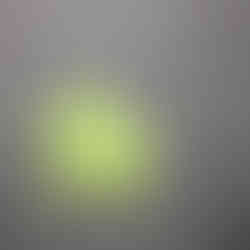Liquidambar styraciflua
- Admin

- Jul 23, 2021
- 4 min read

Walking under the Liquidambar on Waverly Street in Palo Alto was a treat in autumn. As an adolescent, back when students walked to school, I enjoyed looking up from the sidewalk at the brilliant street tree colors. All shades of red, purple, orange and yellow, depending upon the specific cultivars. For example, there were L. styraciflua 'Palo Alto' (yes, can you believe it?), with their shades of red, L.s. 'Burgundy', you guessed it, deep red to purple fall foliage, and L.s. 'Festival', as the name suggests, most of the representative colors all in one tree. There are others, too, including one I had not heard about until researching for this post, L.s. 'Grant's Seedless Zn-4,' producing few problematic seeds (see below).
These were the trees that made me fall in love with the season; I was too young to understand autumn color like this represented their native East Coast, not here. So, each fall while dawning thick cable knit sweaters, I looked forward to the change, never thinking fall would be different in native landscapes of the arid West. No wonder I have an affection for the East Coast in autumn, but it also means I had to relearn the true colors of California.
Google Earth tells me most of those street trees are gone now, and as an arborist, I can imagine the reasons why. Firstly, there are overhead utility lines along the route, and as many Californians have recently learned, trees growing into power lines are not a good thing. The Waverly Street trees were topped and over time would take on rather mutilated forms.
Secondly, their root systems are shallow. In their native environment where regular rain events generate summer water, roots do not grow deep into lower soil layers. When we plant them near or in lawns, they behave similarly, moving their roots through the shallow moisture, and over time the same roots swell and take over the lawns...and lift sidewalks. Repairing sidewalks, I'm sure, became too frequently associated with American sweet gum, and so their once A-List status dropped to the D-List as street trees in places with inadequate space.
Finally, take a look at the seed capsules, misleadingly called gum balls (don't eat them!); those spiky, dangling ornaments left behind that look similar to Medieval flails. They drop to the ground when they have dried, and on concrete sidewalks can feel like missing Lego pieces people step on in their bare feet. Ouch! Given their shape, they can also roll under foot causing ankle pain. For these reasons, L. styraciflua has gone out of favor.
Here at West Valley College, they are perfectly situated in the landscape, offering an opportunity to still enjoy their benefits. Far from sidewalks or other concrete surfaces, they border between landscape areas and lawn. This offers an opportunity to provide adequate watering with minimal risk of other negative conditions. No overhead utilities either. They can be enjoyed from a distance during any season, but I will always stop by when the leaves turn their brilliant colors.
West Valley College Campus Location: Liquidambar styraciflua
Language Arts/Social Science (east face)
Lat: 37°15'46.05"N
Long: 122° 0'33.91"W
facts
Botanical Name: Liquidambar styraciflua
Liquidambar: Latin, liquidus, for liquid, and ambar for amber, reflects the appearance of the resin
Styraciflua: Greek, storax, references the same resin or gum noted above
Common Name: American sweet gum
Family Name: Altingiaceae
Origin: Eastern United States
design considerations
Positioning: Background, riparian area, forest
Garden Themes: Woodland/shade, autumn
Uses: Accent, specimen, lawn (note concern listed above), shade tree
identifying characteristics
Type: Deciduous tree
Form: Conical
Texture: Coarse
Size: 25' wide at lowest limbs, 60' tall (may vary by cultivar)
Outstanding Feature(s): Fall color, form
Bark: Light green stems followed by fissured warm gray bark
Leaf:
Type: Simple
Arrangement: Alternate
Shape: Palmate
Margin: Dentate, serrate
Color: Medium green throughout summer turning various shades of yellow, orange, purple, and/or red in fall (color determinant by cultivar)
Surface: Smooth, glossy
Flower: Spring. Inconspicuous
Fruit: Autumn (may hang on longer). Spiky, round capsule. Light green turning brown
cultural requirements, tolerances & problems
Sunset Zones: 3-9, 14-24
USDA Zones: 5-9
Light: Full sun to partial shade
WUCOLS SF Bay Area Hydro Zone: Moderate
Soil:
Texture: Clay, loam, sand
Moisture Retention: Responds best with persistent, light moisture
pH: Highly acidic to lightly alkaline
Tolerances: Drought, heat, soil compaction, oak root fungus, deer
Problems: Fruit drop may be messy and a slipping hazard on solid surfaces. May be shallow rooted, which may conflict with patios and sidewalks.
Branch Strength: Medium
Insects: Invasive shot hole borer, aphids, caterpillars, scales
Disease: Armillaria, anthracnose, chlorosis, sooty mold
cultural interests
The gum obtained from genus plants has been used in the past for a variety of purposes, including chewing gum, incense, perfumes, folk medicines and flavorings.
~ Referenced in the Missouri Botanical Garden website
citations & attributions
Missouri Botanical Garden. "Liquidambar styraciflua." Accessed on July 22, 2021, from https://www.missouribotanicalgarden.org/PlantFinder/PlantFinderDetails.aspx?kempercode=c116.
Norris Brenzel, K. (Ed.). (2012). The New Sunset Western Garden Book. New York: New York: Time Home Entertainment, Inc.
NC State Extension. "Liquidambar styraciflua." North Carolina State University, Raleigh. Accessed on July 22, 2021, from https://plants.ces.ncsu.edu/plants/liquidambar-styraciflua/.
Urban Forest Ecosystems Institute SelecTree. "Liquidambar styraciflua Tree Record." 1995-2021. Cal Poly State University, San Luis Obispo. Accessed on July 22, 2021, from https://selectree.calpoly.edu/tree-detail/819.
Water Use Classification of Landscape Species. "WUCOLS IV Plant List." University of California, Division of Agriculture and Natural Resources, Davis. Accessed on June 28, 2021.
Photos:
All photos by TELCS.


















Komentar